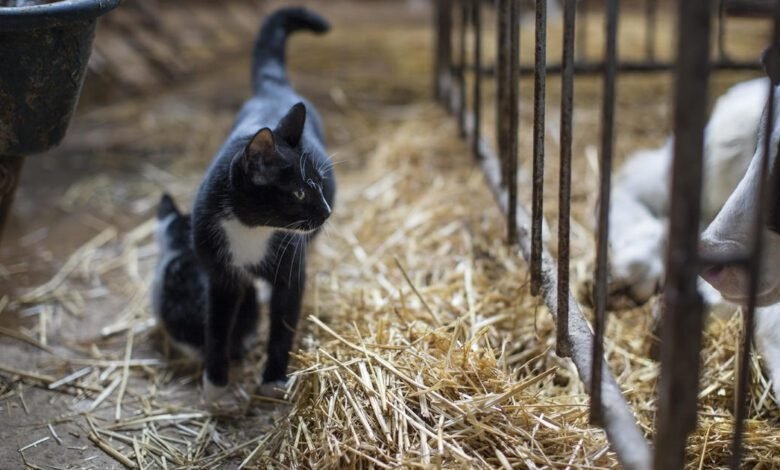More than half of cats died after drinking raw milk from cows infected with bird flu

More than half of the cats around the first Texas dairy farm to test positive for bird flu this spring died after drinking raw milk from infected cows, scientists reported this week, offering a window into the impact the virus took as it spread without warning. precedents for the livestock industry.
The report, published Tuesday in the Centers for Disease Control and Prevention’s journal Emerging Infectious Diseases, chronicles the initial investigation by veterinarians and academic laboratories into a disease that began spreading to cows across the region earlier this year.
Texas farm cats were fed raw milk from cows that were infected with highly pathogenic avian influenza, or HPAI H5N1. The day after the farm started noticing the cows were getting sick, the cats started getting sick too. In the end, more than half of the cats died.
“The cats were found dead with no apparent signs of injury and were from a resident population of [approximately] 24 domestic cats that were fed milk from sick cows,” the scientists wrote.
Tests of samples collected from the brains and lungs of dead cats produced results suggesting “large amounts of virus.” Autopsies of the cats also revealed “microscopic lesions consistent with severe systemic viral infection,” they said, including in the eyes and brain.
About 1 in 5 milk samples the Food and Drug Administration has checked at U.S. retailers has tested positive for H5N1, although the agency said last week that studies so far show that pasteurization is working to kill the virus in milk; only harmless fragments remained. Officials have repeatedly asked Americans don’t drink raw milk.
Although the spread of the virus from cows to cats through raw milk is new, cats have long been known to scientists as one of the species especially vulnerable to serious illness caused by H5N1.
The U.S. Department of Agriculture said deaths and neurological illnesses in cats have been “widely reported” on farms with outbreaks of the virus.
By contrast, only a fraction of cows – up to 15% – developed signs of disease in infected herds, the scientists said. Officials said cows largely recover within a month of infections. The virus was devastating for flocks of birds who faced widespread deaths or had to be culled after contracting the virus from wild birds.
Previous research has linked deaths and neurological disorders in domestic cats to H5N1 infections. An earlier study published by Thailand’s CDC magazine in 2006 suspected that a cat had contracted the virus after eating an infected pigeon.
But the recent infections prompted the CDC this month to issue new guidance for veterinarians treating suspected cases of H5N1 in cats, calling for heightened measures such as the use of respirators and protective glasses to avoid contracting the virus.
“Although it is unlikely that people will become infected with the avian influenza virus through contact with an infected feral, stray, feral, or domestic cat, it is possible – especially if there is prolonged, unprotected exposure to the animal,” the agency said in its statement. . guidance.
Some cases in humans are also suspected to have been caused by the consumption of infected birds, as in Cambodia earlier this year.
Meanwhile, authorities have been racing to contain the spread of the virus in dairy cattle, which is believed to have spread from cow to cow since a single initial spread from wild birds earlier this year.
“The ingestion of feed contaminated with feces from wild birds infected with the HPAI virus is presumed to be the most likely initial source of infection on dairy farms,” the scientists wrote.
The U.S. Department of Agriculture said Monday it would test ground beef sold at retailers for H5N1 and study how cooking the meat could reduce the potential risk posed by the virus, after a previous order increasing testing in dairy cattle transported across state lines.
It is unclear whether any ground beef samples have tested positive for the virus so far. Results “are available” and will be shared when available, the spokesperson said.
Meanwhile, more than 2,000 tests have been carried out by the department so far this month on cattle.
“As of April 30, 34 dairy herds have been affected by H5N1. To put this into context, there are more than 26,000 dairy herds across the country,” the spokesperson said in a statement.




